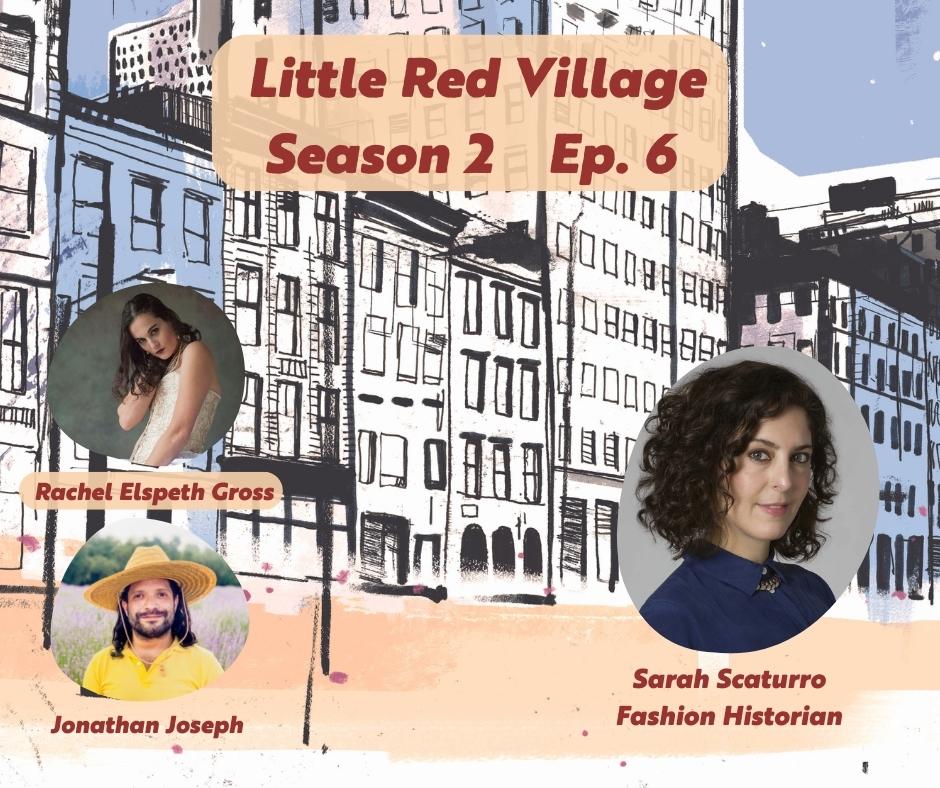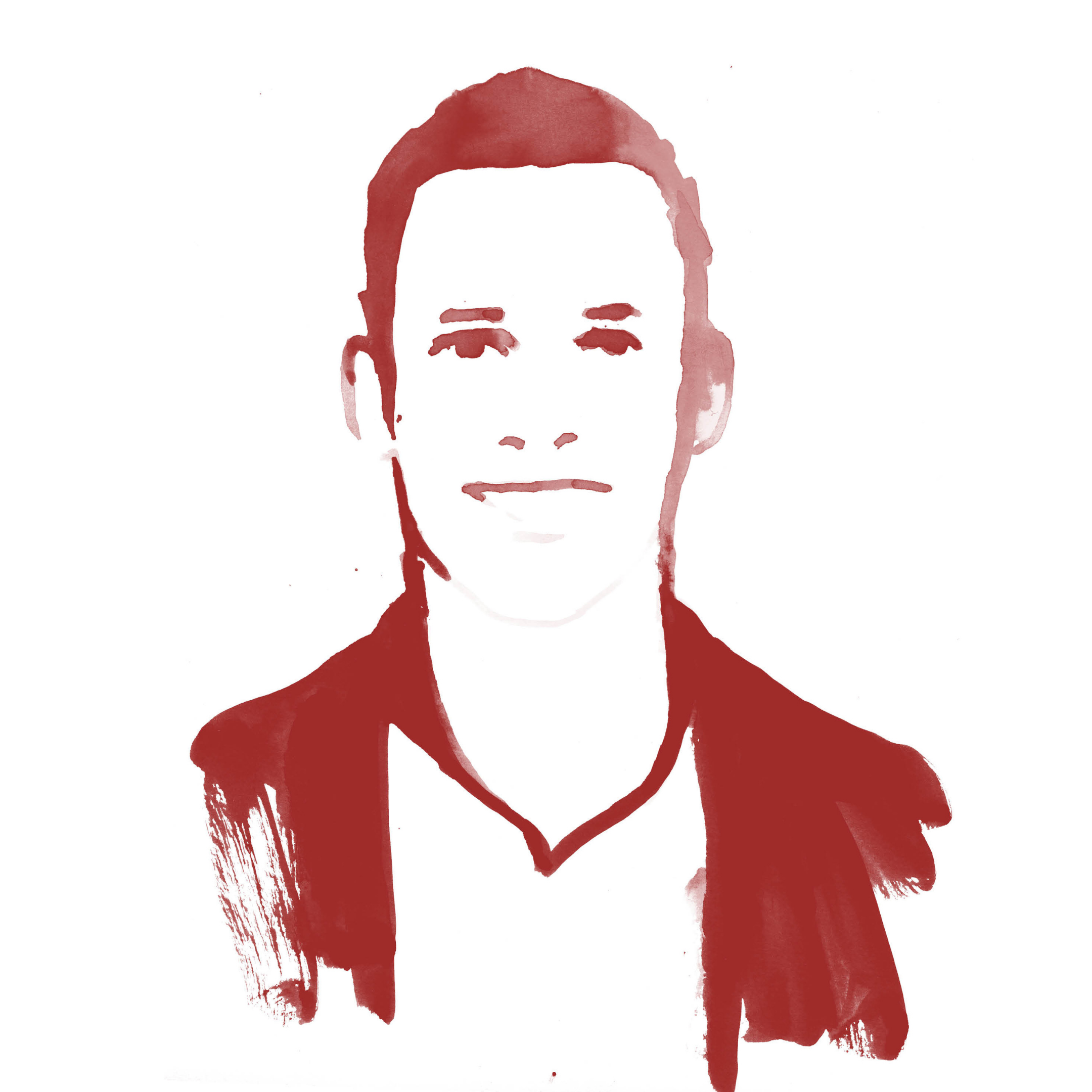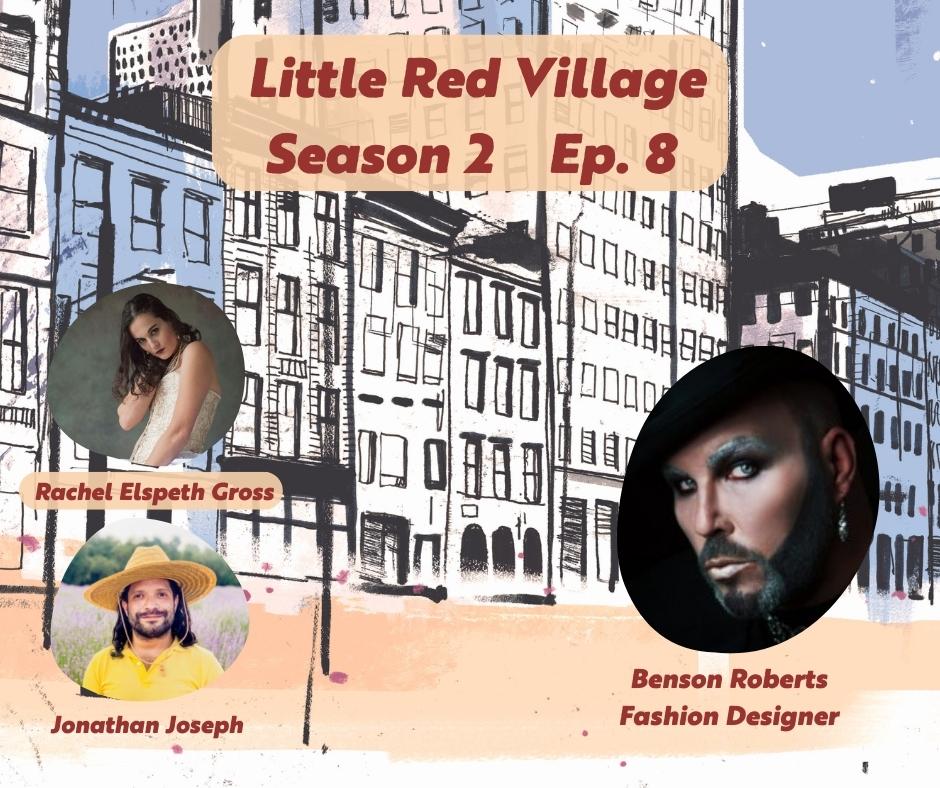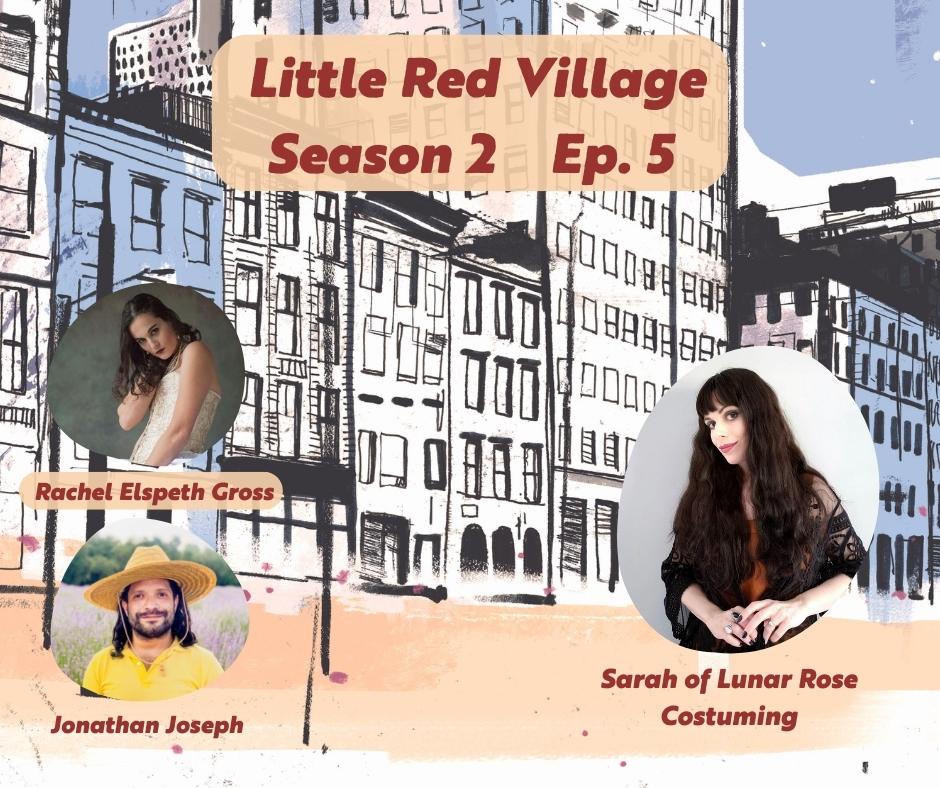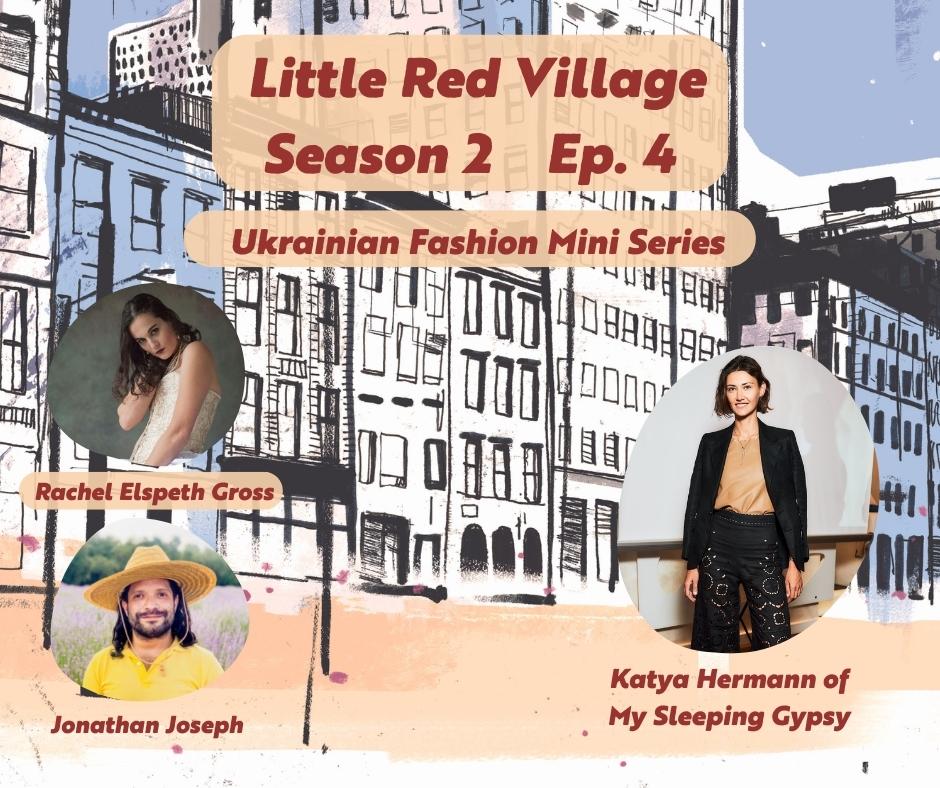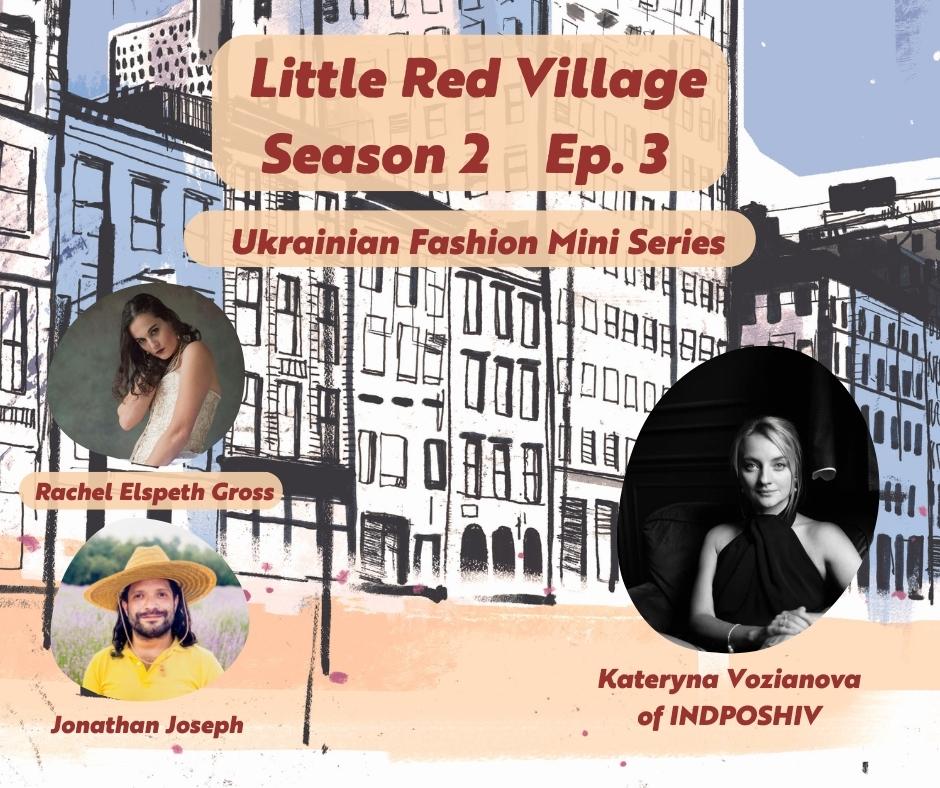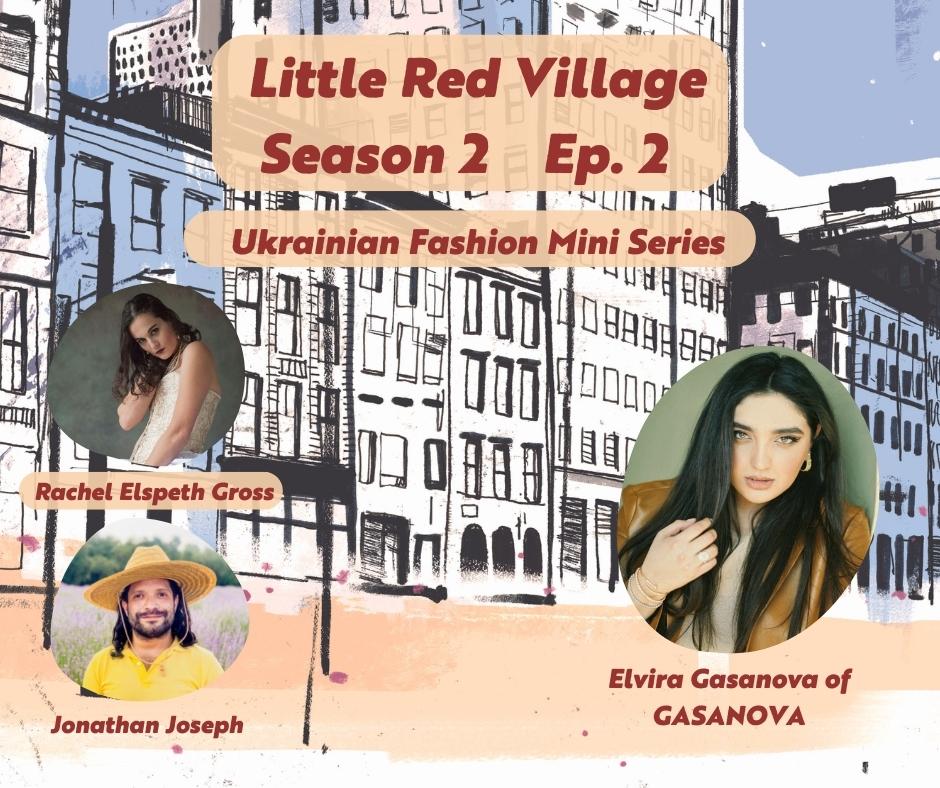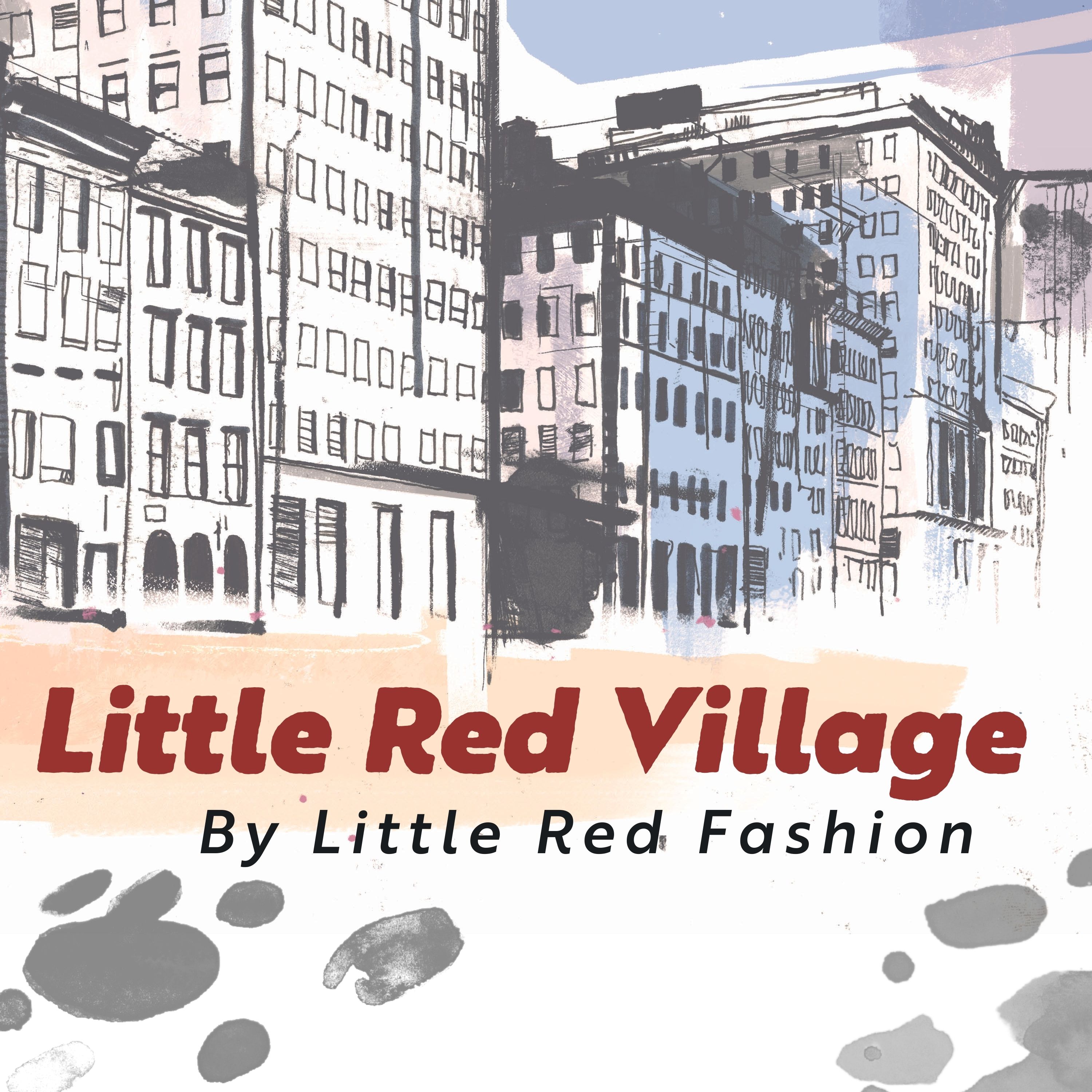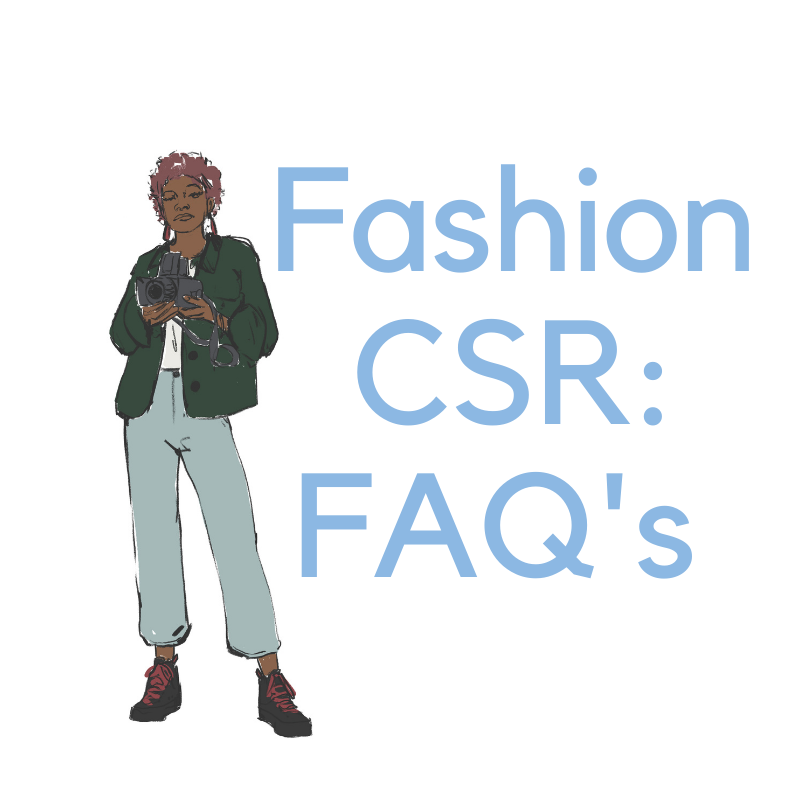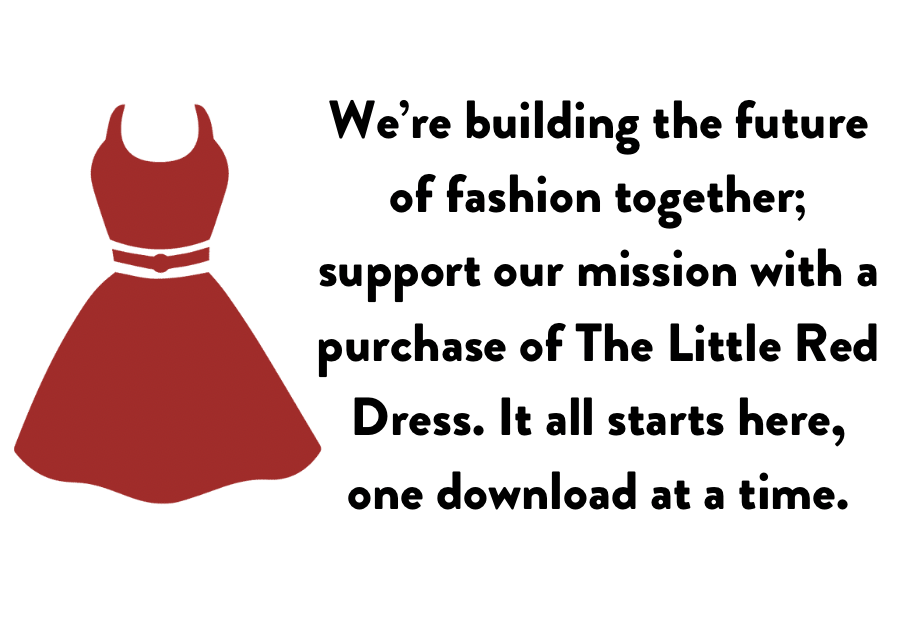Season 2 Ep. 6
Links to listen
Links to all other podcast platforms can be found here.
Speakers
Rachel Elspeth Gross (Host)
Jonathan Joseph (Host)
Sarah Scaturro (Guest)
Rachel Elspeth Gross 00:00
In early 2020. Sarah's Scaturro, left a position leading the conservation initiatives at the Met's Costume Institute, and became the Eric and Jane Nord chief conservator at the Cleveland Museum of Art at the Met, Sarah and her team had worked on many fascinating exhibitions, some really well known shows, like the 2018 Met Gala show, heavenly bodies, fashion and the Catholic imagination. Like many of the people we have spoken with Sara's career path was not a straight line. She had a fantastic teacher early on whose support led to her study in chemistry in college. And as you'll hear her say in this interview, the places where stem and fashion overlap are incredibly important to her as a conservator. And generally, when looking at the world or cultural history perspective, you probably saw Sarah Scaturro's name all over the news coverage, which followed this year's Met Gala. It was the return of the first Monday in May format, after COVID had caused the cancelling of major events around the world. The show was titled America an Anthology of Fashion, a certain person whose name we're not going to mention here. We're a famous dress designed by the Oscar winning costume designer Jean Louis, and had been warned by Marilyn Monroe. From the New York Times to Women's Wear Daily, Sarah was patiently explaining why this mattered why it was dangerous to fashion museums and to private collections. And why the every day not fashion person should care. It's a long story and not one that we're going to get into here today. I'm mentioning it because it's a clear example of how much Sara cares, not just about the history of apparel, but about the preservation of material culture, and why that reservation is so important. Sometimes a dress is much more than just a dress. And when that is the case, Sarah Scaturro was there fighting to make sure that we all have the opportunity.
Jonathan Joseph 02:20
Hello, everyone and welcome. I'm Jonathan Joseph joined by Rachel Gross and our guest today for our I can do that interview part of our Little Red Village initiative here, empowering the next generation of fashion lovers, leaders and creatives. We have Sariska Turo in the studio today, and we are so excited to talk about her work and career as a conservator extraordinaire. Welcome.
Sarah Scaturro 02:41
Thank you. Thank you so much for having me.
Rachel Elspeth Gross 02:43
We were really excited, like just looking over your body of work and the the ways that you are trying to impact and change this industry that we all love so much. And one of the things I was really, really interested in was kind of the relationship between art and fashion that I see existing in your work. I know that fashion gets a rap sometimes is only being luxury or only being you know, excess. But there are times magical places where that Venn diagram overlaps. And I mean, that's my favorite place in the world. So could you talk a little bit about that?
Sarah Scaturro 03:14
Sure. Yeah. So I mean, fashion in the museum's has been around for actually quite a while. But it's almost like this little stepchild, you know, where museums don't necessarily know what to always do with fashion, it's changing a lot more. You know, it's changed a lot over the past 20 years. But there are still some people that do not believe that fashion should be in a museum. And yet, if you put a fashion exhibition in a museum, it will hands down the most popular exhibition at the Museum during that time. And so museums are finding that fashion really draws people in. And one of the reasons it does is because everyone wears clothes. So everyone feels an immediate connection to what it might be. And in fact, one of the favorite things that we all love when you work at a museum is you go around the galleries, each on what people are saying, and we love hearing them saying, Oh, I would hear that, or Oh, I couldn't hear that. Or, Hey, Mom, he was a fantastic at that. And I think fashion just resonates with people. But that being said, you know, it's been a tough ride because fashion. While it can be an art, it does have a commercial component to it. And you know, so does art actually, right. There's an art market, there's a fashion market. So you know, that's something that museums still are trying to grapple with.
Rachel Elspeth Gross 04:51
It is a really elusive kind of a space because you can look at anyone's body of work and I'm sure you could find individual pieces that fell into either category. already, you can look at any price point or tear of the fashion industry. And you could say the same thing. And I, I would bet that just even going from individual to individual what we would consider art, versus what would just be not just with, you know, in this context would only be apparel, a Gap t-shirt is a Gap t-shirt. It's not fine art.
Sarah Scaturro 05:20
Yeah, I mean, perhaps one way of thinking about it right is if something's wearable or not kind of like the more unwearable it is the more than the more you can say, oh, you know, that's art. However, I mean, there are fashion designers that will just make a simple black shift dress. And yet it's impeccable and it's beautiful. And it's fitted to the body in such an amazing way. You know, that too? Could be considered art.
Rachel Elspeth Gross 05:50
Yes, I remember you. Didn't you write something about Lucien Lelong? Yeah, a little black, perfect dress.
Sarah Scaturro 05:58
Yeah, that was one of the first major fashion designers that I really got to know with regards to kind of work, but also their clothes and how their clothes actually looked and worked on the body. And I'm a big fan of his.
Rachel Elspeth Gross 06:12
I completely understand why. Magical magical things. So how did you get started? Did you always know this was the place you wanted to work?
Sarah Scaturro 06:20
Oh, heck no. No, I didn't even know conservation really existed as a field until my 20s. My late 20s. I fell into it. It was a total accident. You know, I had always loved dressing up. I had love modifying my own clothes, and sewing my own clothes. I had loved looking at magazine. I loved history I loved, you know, a whole bunch of things, I loved art. And I really weirdly was not scared of science. I had an awesome chemistry teacher in high school who just really was able to convey chemical concepts really easily. And just he made it really exciting. And so I took chemistry in college. And I think one of my aha moments for this field was when I was, you know, trying to figure out what what master's program would I go into, because I didn't know what I wanted to do with my life at all. It was in New York, I had moved there for boy, you know, like whatever. I'm in New York
Rachel Elspeth Gross 07:25
We all do, it happens, yeah! (Laughing)
Sarah Scaturro 07:29
And I didn't know what I wanted to do. And the Fashion Institute of technologies has this master's program in fashion and textile studies, colon history theory and museum practice. And it's a State University of New York School. So it's cheaper than a private school like NYU or Parsons. And what I realized was to get into the master's program, I had to have a foreign language, checkmark, I had to have art history, check studio art check. And I also had a chemistry check. And so I was like, Oh, my God, I have every single thing you needed to get into this program. And it's kind of a weird, diverse set of things to get into the program. And so I was like, well, let's, let's see what they say. And they accepted me. And I went into the program, and it was no looking back. I was like, this is such a cool, cool profession.
Jonathan Joseph 08:24
I love that so much not solely, because my father is an organic chemist. So I have a soft spot in my heart, but all things chemistry, like having a bachelor of arts and English Lit. I think that's a good three point to explore a little bit, because one of the things we really love talking about here at Little Red is really the confluence between fashion and STEM fields. Because I think that personally, that is a very untapped intersection. discourse, and especially for young people and kids who are interested in fashion who, frankly, don't at face value really necessarily see that connection. Do you think you can elaborate a little bit on that that intersection, especially for young people, like what ways they may look to and without even realizing it?
Sarah Scaturro 09:08
Totally, so many different ways. So of course, I'm a conservator. Right? I specialize in fashion textiles. So we can call me a dress doctor, essentially. But besides being just a conservator, if you're looking at the confluence of fashion and stem, I mean, you have materials engineering, we actually engage with a lot of undergrads in materials engineering, because when they realize they can both create materials that will help conservators do their work, but then also the materials they are creating might degrade at a certain way. They start really putting two and two together that what they do has impact on art. And so by extension has impact on fashion. So definitely if somebody's interested in fashion, but also has an affinity for, you know, science and math or any of the STEM fields I mean, polymer engineering, mechanical engineering, all the 3d printing technology that's coming out, all the tech just be the fact how they're now having these garments that are created fully in the three dimensional space. I mean, there's so much overlap that you can have. And you know, where I'm coming at. It is obviously from a cultural heritage perspective. But there are signs everywhere, it can be even in how you wash and maintain your clothes, like the kind of soap you use everything. And, of course, that has sustainability and ecological impacts as well.
Jonathan Joseph 10:34
Absolutely, I think it's so great that you touched on post consumer consumption and care, because that's definitely something else, especially because we're dealing with children, like, what grown up doesn't want to better empower the kids in their life to properly maintain their clothing. And really something I'm really deeply committed to, as is Rachel and the company at large is really fostering this idea of buying less making it lasts longer and learning how to maintain and properly launder it, especially from the sustainability side to the idea of things like microplastics, when you buy these, you know, blended or synthetic fiber garments, and you're washing them repeatedly, what is the impact that just the wash cycle is having? And how can you mitigate those consequences, for example, by washing cold water versus hot water and all these different things.
Sarah Scaturro 11:17
I mean, yeah, you can go on and on and on. I mean, I personally, one of my top tips that I tell everybody is really start to backpedal on some of the drives that you're doing here, there's no reason to be dry cleaning everything that says dry cleaning only. And in fact, if you really understood what dry cleaning meant that you know you are putting your clothes into this solvent bath in which has been dissolved many, many other kinds of chemicals where other people's clothes have been rolling around in it. And so essentially, you're getting all of the dissolved crap from everybody elses clothes. And it's your, you know, clothes are tumbling around in the solvent bath, and then that's clean? No! I actually hand wash everything that says dry, clean, only, almost everything I dry, clean, maybe about once every four years to Yeah,
Rachel Elspeth Gross 12:09
I mean, I could see certain pieces needing it but one of my favorite pedestals to get on to yell about this is the care maintenance of denim, and how as a twill weave, like please don't wash it so much, please don't put it in the dryer, please don't use, you know, abrasive or scented or anything, you're just going to destroy your favorite garment. And the nice part about maintaining them well is it is also, even if it has a side effect, it's less water consumption, less chemicals, you know, going into our water tables, I mean, it's......oh, I can preach. (laughs)
Sarah Scaturro 12:36
I mean, and another thing that I was thinking about is how to do kind of more green or sustainable pest management, integrated pest management. So with a lot of the phasing out of, you know, certain types of really toxic insecticides. And with the climate change, what we're finding around the world is that clothing moths and carpet beetles are kind of coming up with a vengeance. And so you know, you're not going to want to sit there and like spray your entire closet or spray your entire house to get rid of them. Instead, there are really simple and effective methods that take time and persistence, but definitely work. And one of them is actually just cleaning your house, vacuuming your closets, vacuuming all the debris out of your closets. Another is you know, using these like simple stumbled traps to like track and see if you're getting damaged. A third could be you know, when I put on my sweaters kind of storage over the summer, what I do is I just throw them in the dryer on high heat really quickly. They're totally dry already. But that will help kill any insects and insect eggs or larva of interesting how to tie it in a plastic bag or in a bin. You can use the same thing over and over. And it's good to go. You're not gonna have any insect surprises when you open it back up the next season. And so they're really simple methods to maintain your clothing that keep it clean and without chemicals.
Jonathan Joseph 13:26
Music to my ears!
Rachel Elspeth Gross 14:08
Yeah, no. That's the kind of thing you can find ways to just integrate into your daily life. It doesn't have to be like you acquire some product system or you subscribe to some service. It's just the behavioral shift. And we are all capable of making positive changes like that.
Sarah Scaturro 14:24
Yeah, and the thing is, you know, that when I'm telling you to do about, like, you know, managing insects, you know, that actually comes from the museum world where we have something called an integrated pest management program, and we are very vigilant about any insects attacking our collection. And so we have a methodology that we apply that ensures really no chemicals, no toxic things, and yet we're able to keep our collection insect free.
Rachel Elspeth Gross 14:51
that's really neat. I bet some of those techniques are old. I bet some of them are like from Egyptian like yeah, probably not the dryer part.
Sarah Scaturro 15:00
Yeah, maybe not the dryer part. But definitely, you know, like even tuck going back to your denim like, not that we became collection objects out in the sun, but you can definitely hang your own clothing out in the sun to help clean it.
Rachel Elspeth Gross 15:13
Absolutely!
Sarah Scaturro 15:14
You can definitely like for the your denim, you can pin that out in the sun and the UV kills bacteria, right kills viruses and can help kill insects as well. That's a very sustainable, ecological way. Now, we wouldn't do that with actual museum because UV also can damage fibers over time, you can you know, fade color, things like that. So we don't want to do that. But with your own wardrobe, why not?
Rachel Elspeth Gross 15:42
Right and you get that nice, that nice smell and that sun tea memory from my childhood, my mother. So one of the things we always like to ask people is about early fashion memories. Jonathan and I both have very distinct memories of early times in our lives when we felt connected to clothing as a whole. And we found that by talking to people in a whole range of backgrounds and you know, career paths, and most of us seem to have some kind of little kid moment where we just like we found our place, kind of do you have a story like that?
Sarah Scaturro 16:17
You know, I love this question. I do actually. And I was thinking so I was a child of the and so in the early 1980s. I was about you know, anywhere from seven to 10 years old, and I would love dressing up and lip synching to music with friends primarily like Cyndi Lauper in particular, I really loved dancing to Cyndi Lauper and I was also taking some jazz dance classes. And one year for the recital, we had to do a can can dance, which is this kind of dance where you line up, you know, and you lift up your skirt and sway back and forth and keep your legs out right and a choreographed way. And this can can skirt was amazing. So the shiny block on the outside and on the inside had tears of hot pink, hot orange, hot yellow ruffles, it was awesome. So what I remember is turning that skirt inside out. And using that as the basis of my lip synching outfits with my friend, your lip synching to Girls Just Want to Have Fun by Cyndi Lauper. And yeah, I just I love that dress. And I just loved that, I was also able to take an extra piece of clothing and rework it in a way that I didn't deploy it or I didn't wear it. As I was prescribed to wear it. As I was told to wear it, I actually inverted it. And, and that's something that has often stuck with me and what most of the people who style I admire, it's because they've taken an ordinary piece of something, and have totally supported it or inverted it and and put it on their bodies really unexpected way. And that's very exciting. That's kind of comfortable.
Jonathan Joseph 18:03
Yeah, I love that. I mean, it's, you know, it's a testament to the power of styling really, yeah, that's really what you connected with. It seems to empathize with that because, you know, my formative fashion moment was definitely a symbol of like braces and CP, the colored soccer type socks that instead of going over a shin guard, I would put over my braces. And for me, that was like a definite styling choice because it was color coded to my outfits. And it was just this great exploration of fashion as armor and then fashion as sort of reclamation tool for the self. And so I definitely I definitely am simpatico with that.
Rachel Elspeth Gross 18:40
The idea of how empowering a moment like that can be I mean, yeah, there are so many places in life, when we don't have options, we don't have choices, we have to make the best with you know, whatever limited choices we do have. But finding ways not even like to look outside of the box. But to just play. I mean, Jonathan, and I come back to this all the time that work and play can and maybe should be very much the same thing. And I really heard that and that story you told us I feel like that's, you know, magical.
Sarah Scaturro 19:10
It is yeah, it is closer, so transformative. I have every important moment in my life. I know what I was wearing and how I was wearing and I think that's one of the reasons why I came to fashion conservation was that it enabled me to even get to know somebody else through their own clothes. And I think one of the really wonderful things that fashion conservators tend to do, which I think is really interesting is we anthropomorphize the clothes that are on tables or on our benches, right? So that work of me, we try to understand like, is the stain a champagne stain or is this hole from a cigarette or, you know, oh, why did they take it in or let it out? Or you know, you anything like that. And it really, it humanizes the past in a way that photos don't always do. I mean photos can but like when you actually have an old garment in front of you that somebody wore is so powerful.
Jonathan Joseph 20:16
Oh, absolutely. I think you know, given that our first book is the story of an anthropomorphized red dress, I absolutely agree, I think, to your earlier point, you know, I think that's where a lot of the power of fashion exhibitions in general lie that through line between the self and the embodied garment, and then when we remove it from the body and habit, let's say on a mannequin, and how you can tell a story through that. It's why I'm so passionate about building our digital fashion museum in the metaverse is one of our projects that we're working on, which is really exciting to that end. But also, I just, I am fascinated by the shifting Zeitgeist within the museum community and really being more diligent in how we cover the stories of garments, because as I'm sure you're well aware, a lot of the extant garments we have that are preserved, you know, and this goes back to utility versus frivolity maybe are from a certain socio economic class and edify a certain view and certain class of society. And it's much harder to find, for example, excellent garments of everyday work, wear and things from the general public, perhaps. And I was wondering if you could speak to maybe some of your observations on that front, because for us at Little Red we always want to be exploring fashion through that lens of diversity, equity and inclusion, as well as sustainability. And I think from the curatorial perspective, I'd love to hear how in your experience over the past few years how that shift has been happening.
Sarah Scaturro 21:37
Yeah. And and that's such a great question. So I would say that not only is there a specific socio economic class type of object that has been collected, but also a size restriction. And I Know coming, you know, from the Costume Institute, I worked there for eight years, there were a lot of things we didn't acquire because of a certain size or something. And, you know, it's not my decision necessarily, but one of the arguments against it was that, you know, these things wouldn't fit on a mannequin. And so actually going back to the mannequin, and when you think about building up your museum, in the metaverse, mannequin choices, very political, it can mean a lot. What kind of body is it on is their head? What does that have look like? What is the color of the mannequin? All of this stuff? What we have seen historically in the museum, I'd say over the past 20 years is that the standard museum mannequin It's been called the schlappi. It's SC H L, a ppi. And it's by a company called Bonaveri. And it's a beautiful mannequin, but it's a very small size, very elegant proportions, very specific features of a face. And I would say some of the most exciting work coming out right now is actually coming out of the VNA. Victoria and Albert Museum in London. I was just in London last week, visiting a friend of mine who works to develop the mannequins for all of their fashion exhibitions. So she developed the Frida Kahlo mannequin, she's now developing the mannequin for the African fashion show. And the work they are doing is not only trying to diversify, how objects are shown, but also getting community input and getting stakeholder input on on really, what is the right way to do it. I mean, they're going about it. So, so smart. So I have great hope for the future of mannequins that we're not in fashion exhibitions that we're not going to be seeing them on the same boring, tall, white skinny mannequin called the schlappi. That's my little tirade on that I'm so sick of it.
Jonathan Joseph 23:49
I, you know, as a fashion lover and art historian, I too am sick of the flippy for sure. Because Hello, look around just to you know, in the power of curation for especially because of the the public resonance with fashion exhibitions, I think those work in tandem to really carve out a very important space for vision, I call it vision holding, you know, when you're a little kid, and you are at that exhibition, and you're having that moment of connection, like there are so many children, I feel like we're denying that moment to because they're not being recognized, and they are not being mirrored. There's no mimetic conversation between historically marginalized populations for any number of reasons. And Valence is because of that. And because of this over reliance on the schlumpy as you put it, so I had to ask you that because like I was, I was, you know, I knew we were doing this interview, I was like, oh, man, I gotta, I gotta dive into that.
Sarah Scaturro 24:47
It's really, you know, there are some good museum students who could work. There's also the disabled body that is not so present.
Jonathan Joseph 24:54
Oh, yeah. I love Dr. Ben Barry's worked on that in terms of fashion.
Sarah Scaturro 24:58
Yes, his work. is amazing. And you know, there are a lot of good people out there. I think people know this is a problem. It's just putting in the work to actually start moving it forward.
Jonathan Joseph 25:10
It comes back to intentionality is really a lot of these sort of whether it's on the sustainability front or the DEI front is entities and organizations taking ownership of that intentionality and then putting that intentionality into action in as many ways as possible with that essential stakeholder input.
Sarah Scaturro 25:27
Totally, very well put.
Rachel Elspeth Gross 25:28
Well, some of its cultural, right, like we all I mean, if we don't know right now, that if a small child sees themself in a superhero movie, that they are going to have a better commitment, they're going to have a brand loyalty if you want to be totally like, dark about it. But just representation matters. And seeing yourself or seeing a version of yourself in the media matters. And perhaps that wasn't mine, perhaps it definitely wasn't possible. 15 years ago, let alone 25 or 100. You know, so it's a convergence, somebody wanting all said that not too long ago, but that's really what it seems like to me, maybe it's the right time, maybe it's the right place, maybe we can have a better world. It doesn't have to be dystopic.
Sarah Scaturro 26:11
Totally agree. I mean, fashion can have some disturbing edges. But I think overall, it's got so much magic promise to it. And you know, I love that's why we want to have it in a museum too, right? Because it can show people the possibility.
Rachel Elspeth Gross 26:28
Absolutely. So before we go, we always like to ask we are and by we I mean Jonathan and I, we are completely obsessed with fashion books, we always want to know if there's a particular title or author book recommendation to be for kids for adults.
26:44
Yeah, I mean, you know, this book recommendation is probably not the most exciting, but for me, it's a really foundational informative book. And it's the book titled fashion history from the 18th to the 20th century by Aki co Fukai. In the Kyoto Costume Institute fashion, yeah. My favorite. It's from the Kyoto Costume Institute, which has one of the best collections of Western fashion. And it is displayed on these cute custom Institute mannequins. But they actually developed with the custom Institute in the 70s, they developed this mannequin. And I don't know it, just the dressing, the styling, the posing is pretty exquisite. And, you know, is it so relevant today? Maybe, maybe not. But all I know is when the first time I saw it in the early 2000s, right, as I was going into the master's program, I found it the most informative, helpful and magical books. And then what I really loved was that when I got to see the dresses in person, afterwards, because I had known them so intimately, and they were my friends through these pages, that through the photographs, and then like when I actually got to see him, I was totally geeking out, it was like, you know, seeing a celebrity or something, you know, I was like, oh my god, this is this dress. And I just have a soft spot for that.
Rachel Elspeth Gross 28:06
No I completely understand, I have a copy I got when I was in design school. I don't know if it's the first or second printing of it. But like it still has all of my tabs on all cases that I need to go back to like for whatever I was doing 10 years ago, 20 years ago, but yeah, I agree. It's transportitive. It is. I mean, there's some great people call there's some Paul Paul Ray, there's so many pieces in there that I just want to like, yeah, not touched. I understand. That's not always the right thing.
Sarah Scaturro 28:32
I have a funny story. So when I was doing my master's program, entry interview, they asked me, why did you want to go into the program? And I was like, oh, I want to touch the clothes. And they were like, No, you can't touch the clothes. No, but but the thing is, is actually now I do get to touch the clothes, you know, and I get to actually say who else gets to touch the clothes, which is a lot of power to have. And with that comes a lot of responsibility, right?
Rachel Elspeth Gross 29:05
Back to superheroes! Yeah. (Laughs)
Jonathan Joseph 29:07
Yeah, absolutely. I mean, I also think too, that's part of what inspired us to do the digital fashion museum concept because you can't touch the garment or widely exhibited as much as one may like just because of wear and tear and exposure to UV and all these things we've already talked about. And I think as augmented reality and xr technology just gets better and better and better. You know, I think fast thinking for myself and the company here but huge obsession with this idea of making fashion more tangible through 3d scanning of extant garments and really diving into you know, making the dress Doctor portion of what people like you do more tangible and approachable for people and digestible because I think that is that moment that you spoke of where it's like a celebrity but it's the dress or the shirt or the jacket or what the penny, whatever it is, and I think everything we can Due to create more of those moments, is going to serve the industry better moving forward and help us create one that is for everyone.
Sarah Scaturro 30:10
I think it's the digital world gets more and more meta in everywhere I do think the physical garment will still retain, and perhaps even more so have an aura about it. You know, it's people like us, it's the conservators that really work to prolong that, and, you know, help move that aura. And one of the things I do like doing with in particular, the Charles James exhibition was a really great example was, you know, we did 3d scan everything, and we did you know, photogrammetry. And we were able to work with animators who created these amazing animations that were actually in the exhibition, which brought the garments more to life, we're able to, you know, these animations were able to show the garment in movement and, you know, kind of dissected actually what's inside. And so there's so much more potential between technology and fashion exhibitions out there.
Jonathan Joseph 31:05
Oh, absolutely. I mean, I love the ribbon dress, for example, that disassembly and reassembly of the ribbon dress was phenomenal. Oh my gosh, good type of, I guess I'll call it investigative interactivity, trying to bring into our titles and and our experiences because, you know, let's face it, kids today are digitally native. And for them that's sometimes the the tipping point can be that simple 3d interaction. You know.
Sarah Scaturro 31:29
It's just funny, he said the ribbon just because that, to me is the celebrity of the dress I treated, so when you send that tomorrow, because like, that's an old trend to me, I have worked on that. I've touched it.
Rachel Elspeth Gross 31:48
We'll have to put this in the show notes. There's some really wonderful materials that are available online that are really intended as resources for people to study to learn to get access and others both video and photos. So thank you for mentioning that. We'll have to tag all that stuff in there. It's so good. And there's I don't know there's something so neat about seeing the skeleton of a dress. I don't know the stitching or the fixtures. It's fun.
Jonathan Joseph 32:10
Well, that was amazing. Thank you so much to our guest today, stairs Cateura. I am Jonathan Joseph. This has been an expensive dive into the world of conservatorship and the museum side of the fashion industry in terms of curation and really moving the field forward. I'm sure our listeners are as excited as I am not just about the ribbon dress, but about everything we discussed today. Thank you so much, Sarah, for joining us here at Little Red Fashion on our podcast. And thank you as always to my comment in arms Rachel Elspeth gross, we will see you soon make sure you are following us on Instagram at Little Red Fashion CO and that you signed up for our mailing list at Little Red fashion.com. Bye, everyone.
Rachel Elspeth Gross 33:22
Bye.
